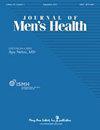COVID-19大流行期间韩国男性和女性对运动的认知和关键属性:使用大数据分析的比较研究
IF 0.6
4区 医学
Q4 Medicine
引用次数: 0
摘要
背景:新冠肺炎大流行增加了人们的健康风险,这是由于对行动和进入锻炼设施的限制。这项研究利用从社交媒体收集的数据,比较和分析了新冠肺炎大流行背景下韩国男性和女性对锻炼的看法和关键属性。方法:数据收集时间为2020年1月至2021年6月。搜索关键词分为“新冠肺炎、男性和锻炼”和“新冠肺炎、女性和锻炼”,数据通过大数据收集和分析平台Textom(The Imc股份有限公司,Daegu,Republic of Korea)收集。使用Textom进行频率分析、TF-IDF分析和程度中心性分析。此外,使用UCINET 6(Analytical Technologies Corp.,Lexington,KY,USA)进行CONCOR(CONvergent and CORrelation)分析,以可视化相关单词并分析聚类。结果:总共收集和分析了10703个5.935MB的数据点。通过频率分析、TF-IDF分析和程度中心性分析,得出新冠肺炎男女运动相关的前50个单词。我们还得出了四个常见的集群(锻炼方法、新冠肺炎情况、朋友和运动)。此外,还分别导出了三个用于男性锻炼的集群(女性健身、儿童和标签)和两个用于女性锻炼的集群。结论:研究结果表明,可以根据性别为运动提供建议和健康改善计划。此外,我们的研究结果可以作为制定新冠肺炎大流行期间与锻炼相关的健康促进计划的学术基础,这有助于降低与大流行相关的经济成本和健康风险。本文章由计算机程序翻译,如有差异,请以英文原文为准。
Perceptions and Key Attributes of Exercise Among Korean Men and Women During the COVID-19 Pandemic: A Comparative Study Using Big Data Analysis
Background: The COVID-19 pandemic has increased risks to people's health due to restrictions on movement and access to exercise facilities. This study compares and analyzes perceptions and key attributes of exercise among Korean men and women in the context of the COVID-19 pandemic by using data collected from social media. Methods: Data were collected from January 2020 to June 2021. The search keywords were classified into "COVID-19, men, and exercise" and "COVID-19, women, and exercise", and data were collected through Textom (The Imc Inc., Daegu, Republic of Korea), a big data collection and analysis platform. Frequency analysis, TF-IDF analysis, and degree centrality analysis were performed using Textom. In addition, a CONCOR (CONvergent and CORrelation) analysis was performed using UCINET 6 (Analytic Technologies Corp., Lexington, KY, USA) to visualize related words and analyze clusters. Results: In total, 10,703 data points of 5.935 MB were collected and analyzed. The top 50 words related to men's and women's exercises of COVID-19 were derived through frequency analysis, TF-IDF analysis, and degree centrality analysis. We also derived four common clusters (exercise method, COVID-19 situation, friends, and sports). In addition, three clusters (women's fitness, children and hashtags) for men's exercise and two clusters (weight loss and Olympics) for women's exercise were derived separately. Conclusions: The study results show that it is possible to provide suggestions and health improvement plans for exercise based on gender. In addition, our findings can serve as an academic basis for developing health promotion programs related to exercise during the COVID-19 pandemic, which can contribute to reducing the economic costs and health risks associated with the pandemic.
求助全文
通过发布文献求助,成功后即可免费获取论文全文。
去求助
来源期刊

Journal of Men's Health
Medicine-Urology
CiteScore
0.70
自引率
28.60%
发文量
153
审稿时长
10 weeks
期刊介绍:
JOMH is an international, peer-reviewed, open access journal. JOMH publishes cutting-edge advances in a wide range of diseases and conditions, including diagnostic procedures, therapeutic management strategies, and innovative clinical research in gender-based biology. It also addresses sexual disparities in health, life expectancy, lifestyle and behaviors and so on. Scientists are encouraged to publish their experimental, theoretical, and descriptive studies and observations in as much detail as possible.
 求助内容:
求助内容: 应助结果提醒方式:
应助结果提醒方式:


